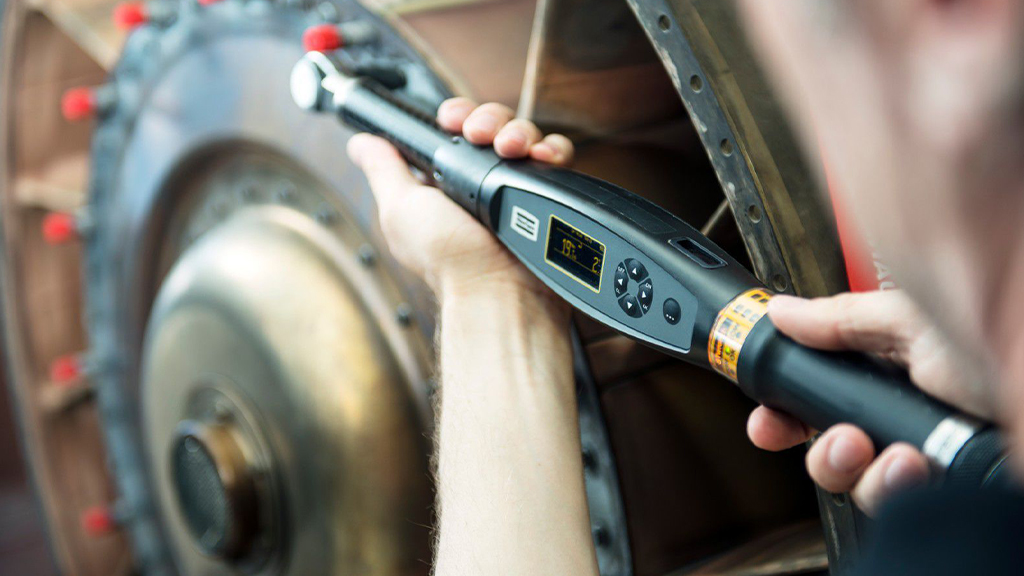When it comes to aircraft maintenance, the torque wrench is an essential piece of equipment. It is used to impart specific torque or rotational force, mainly to fasteners like bolts and nuts. Because of this accuracy, components fit precisely without being too tightened or loosened up. In aviation, where everything is sealed, the correct torque of each part is indispensable both for the security and good performance of the aeroplane.
It keeps your engines running smooth, your wings firmly attached, and your landing gear working right. The torque wrench ensures that, in the hands of a professional technician, each fastener is tightened to a specific amount of torque specified by the manufacturer, reducing the likelihood of mechanical failure.
Ensuring Accuracy Through Regular Calibration
Torque wrench calibration is a methodical process of checking and adjusting tool accuracy. It is a process that ensures all outputs are consistent with the laid-down standards, ensuring that at any particular time, it delivers the correct amount of torque. This not only aids in sparing the failure of parts but also prolongs the life of the components of the aircraft. Regular calibration, therefore, is not just a maintenance task; it’s a cornerstone of aviation safety.
How Often Should Torque Wrenches Be Calibrated for Optimal Aviation Maintenance?
The factors involved in the aviation maintenance of determining the calibration frequency of a torque wrench include the frequency of its use. It means that a torque wrench in everyday use requires more calibration compared to when it’s not being used every day, and the range of torque being applied. Regular maximum use of the wrench can hasten the drift from accurate settings. Thirdly, storage can also affect the calibration of the wrench. If the torque wrench is stored with the setting at its maximum torque level, it will progressively weaken the internal mechanisms and result in false readings.
In addition, environmental factors, including temperature and humidity, may further affect the accuracy of the torque wrench. This is because with the change of temperatures, metals contract or expand; this may interfere with the torque reading. Lastly, if repairs are made to a torque wrench, it needs to be recalibrated. Reassembling the wrench alters its settings and will therefore require recalibration to be accurate.
It’s generally a good idea to calibrate a torque wrench after 5,000 uses or once a year, whichever comes first. This ensures that the wrench is within its reliability and accuracy, where both are non-negotiable in aviation maintenance, as this is where precision takes the greatest reward. Adhering to this schedule supports the overarching goal of aviation safety, keeping aircraft performance at its peak.
Practical Tips for a successful Calibration
- Frequent Checks: In addition to routine calibration, do spot checks using established weights. By doing this, you can detect any early drift from precise parameters.
- Careful handling: Always ensure that you handle your torque wrench with great care. It should never be used as a hammer or pry bar; abuse can mean you ruin a good tool and the calibration that went with it.
- Documentation: Keep good records for each calibration session with the date, settings used, and whether changed, as this is a reference that will show some of the maintenance history of the wrench and will show the stability of the calibration.
- Professional insight: In all cases of doubt, it is always wise to seek professional calibration for your torque wrench. This is part of what would need fine-tuned precision of the tool, especially after repair or impact.
Incorporating Regular Torque Wrench Calibration into Your Aviation Maintenance Routine
Come up with a systematic approach to using a torque wrench calibration. Ensure that this important process is seamlessly carried out in your workflow of maintenance. The subsequent steps provided will ensure that calibration becomes an effective routine within your operations.
- Regular Calibration Schedule: Assign calendar time for the calibration either by how much it’s used or, preferably, what is suggested by the manufacturer. This may entail a figure like every 5,000 uses or yearly for the constant operation of tools.
- Incorporate Calibration Checks: Set short-time allowances for calibration checks, especially before the execution of critical maintenance tasks. This will also help ensure tool accuracy at the most appropriate time.
- Training and Education: All maintenance personnel should be exposed to the importance of the calibration of the torque wrench. Training sessions could be done on how to use, take care of, and calibrate the wrench.
- Use Reminders on Calibration: Set up reminders in whatever system that may be, from digital alerts to a calendar visually hanging, so no calibration session goes forgotten.
- Review and Adjust: Periodically review the process of calibration and adjust where necessary. This should be based on feedback from your in-house technicians which would give you an insight into how effective the process is and areas of improvement for recommendations.



